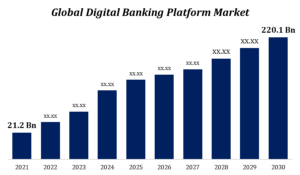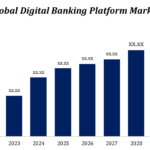Biometric Authentication in Fintech: Exploring Secure and Convenient Identity Verification
In the fast-paced world of financial technology (fintech), security and convenience are paramount. Biometric authentication, a cutting-edge innovation, offers a secure and user-friendly way to verify the identity of users in various financial transactions. From fingerprints and facial recognition to voice and iris scans, biometric authentication is revolutionizing how users interact with fintech platforms. In this article, we will delve into the world of biometric authentication, its benefits, challenges, and its role in shaping the future of fintech.
The Essence of Biometric Authentication:
- Unique Biological Traits: Biometric authentication uses distinct biological characteristics of individuals, such as fingerprints, facial features, voice patterns, and iris scans, to verify their identity.
- Secure Identity Verification: Unlike passwords and PINs, biometric traits are difficult to replicate, providing a robust layer of security against unauthorized access.
- User Convenience: Biometric authentication eliminates the need to remember complex passwords, enhancing user experience and speeding up access to services.
Benefits of Biometric Authentication in Fintech:
- Enhanced Security: Biometric traits are unique to each individual, reducing the risk of identity theft and fraud.
- Frictionless User Experience: Users can seamlessly authenticate their identity with a simple touch, look, or voice command, improving convenience and reducing barriers to entry.
- Reduced Fraud: Biometric authentication is more resistant to common fraud tactics like phishing and social engineering.
- Regulatory Compliance: Biometric methods can help fintech platforms comply with stringent identity verification regulations, such as Know Your Customer (KYC) and Anti-Money Laundering (AML) requirements.
Applications of Biometric Authentication:
- Mobile Banking and Payments: Users can securely access their accounts, authorize transactions, and make payments using their biometric traits.
- Digital Identity Verification: Biometrics are used to verify the identities of users when opening new accounts, applying for loans, and conducting remote verifications.
- Wealth Management: High-net-worth clients can securely access investment portfolios and sensitive financial information using biometric authentication.
Challenges and Considerations:
- Data Privacy: Storing and processing biometric data require robust security measures to prevent unauthorized access and potential breaches.
- Technological Accuracy: Ensuring the accuracy of biometric authentication methods, especially in diverse populations, is essential for reliable user verification.
- User Acceptance: Some users may have concerns about the collection and storage of their biometric data, requiring transparent communication to build trust.
Future Directions:
- Multimodal Biometrics: Combining multiple biometric traits, such as facial and voice recognition, can enhance accuracy and security.
- Continuous Authentication: Advanced biometric systems can provide continuous identity verification, reducing the need for repeated authentication.
- Blockchain Integration: Blockchain technology can be used to securely store and manage biometric data, enhancing data privacy and security.
Biometric authentication is a transformative force in fintech, offering a blend of heightened security and user-friendly access to financial services. As fintech platforms continue to evolve, biometric authentication is set to play a pivotal role in ensuring secure transactions, protecting user identities, and creating a more streamlined and convenient user experience. By embracing biometric authentication, the fintech industry is moving toward a future where digital interactions are both highly secure and effortlessly accessible.


































